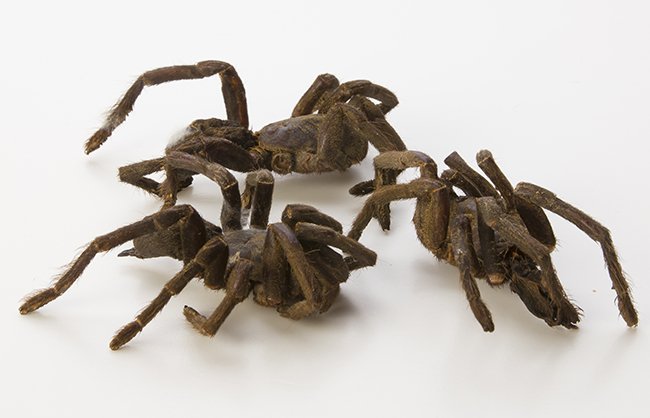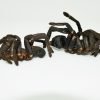This product will be shipped from EU or the USA depending on your location.
Tarantulas (Haplopelma Albostriatum)
Description
Tarantulas (Haplopelma Albostriatum)
Edible tarantulas or Haplopelma Albostriatum (scientific names) are also known as zebra tarantulas. During the Khmer Rouge dictatorship when food was scarce, they were an important source of protein for Cambodians. Today, it is an integral part of dishes most appreciated by entomophagy’s.
Discover all the flavor of edible tarantulas
Edible tarantulas are taken naturally and as an aperitif. To appreciate their unique taste, simply fry and season them gently. By tasting them, we discover crispy legs and soft belly. We find a white and delicate meat in the other parts.
For tasting, edible tarantulas are eaten without accompaniment. However, they can be dipped in a sauce and take with rice if you apprehend the taste. Exactly, the opinions diverge on the flavor. Some speak of a nutty or almond aftertaste, others believe they find the taste of crab.
Yet, what is certain is that everyone is almost unanimous on their taste quality. To discover yourself the taste of edible tarantulas or to store edible spiders in your home, do not hesitate to order them on next-food.net!
An important source of protein
Like tarantulas, edible insects are probably one of the most important food sources of the future. In fact, taking into account the feed conversion rate, 10 kg of feed gives 1 kg of beef, 3 kg of pork, 5 kg of poultry and 9 kg of insects. This figure reflects the potential of insects in protein production.
Compared to conventional breeding, entomoculture mobilizes only a tiny resource. In this perspective, the environmental impact of growing insects to eat is very limited. For example, a beef farm releases 80 times more CO2 than cricket farming.
Aware of these potentialities, entomoculture is starting to gain momentum in France. For now, the edible insects we offer on next-food.net are still coming from Thailand. So, like the many entomophagy’s of the country, come and shop on our site!







